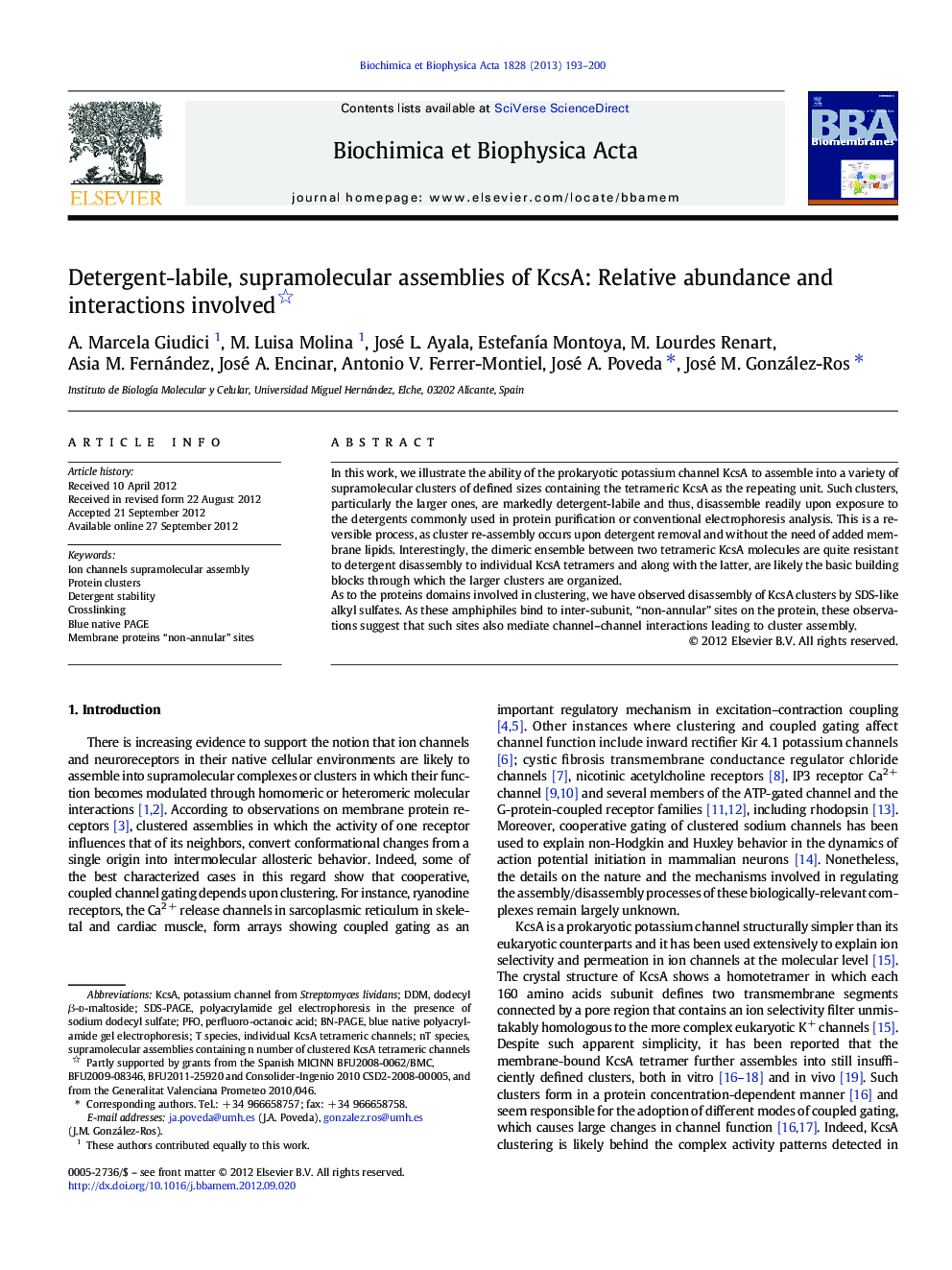| Article ID | Journal | Published Year | Pages | File Type |
|---|---|---|---|---|
| 1944352 | Biochimica et Biophysica Acta (BBA) - Biomembranes | 2013 | 8 Pages |
In this work, we illustrate the ability of the prokaryotic potassium channel KcsA to assemble into a variety of supramolecular clusters of defined sizes containing the tetrameric KcsA as the repeating unit. Such clusters, particularly the larger ones, are markedly detergent-labile and thus, disassemble readily upon exposure to the detergents commonly used in protein purification or conventional electrophoresis analysis. This is a reversible process, as cluster re-assembly occurs upon detergent removal and without the need of added membrane lipids. Interestingly, the dimeric ensemble between two tetrameric KcsA molecules are quite resistant to detergent disassembly to individual KcsA tetramers and along with the latter, are likely the basic building blocks through which the larger clusters are organized.As to the proteins domains involved in clustering, we have observed disassembly of KcsA clusters by SDS-like alkyl sulfates. As these amphiphiles bind to inter-subunit, “non-annular” sites on the protein, these observations suggest that such sites also mediate channel–channel interactions leading to cluster assembly.
Graphical abstractFigure optionsDownload full-size imageDownload high-quality image (64 K)Download as PowerPoint slideHighlights► The KcsA channel is assembled into a variety of well-defined supramolecular clusters. ► KcsA clusters disassemble readily and reversibly upon detergent exposure. ► Non-annular binding sites on the protein mediate interactions leading to clustering.
